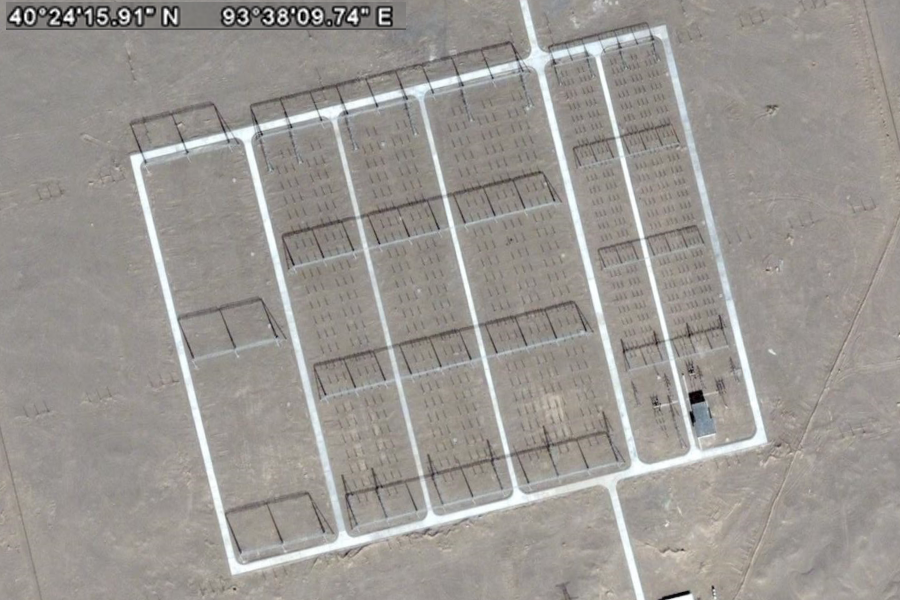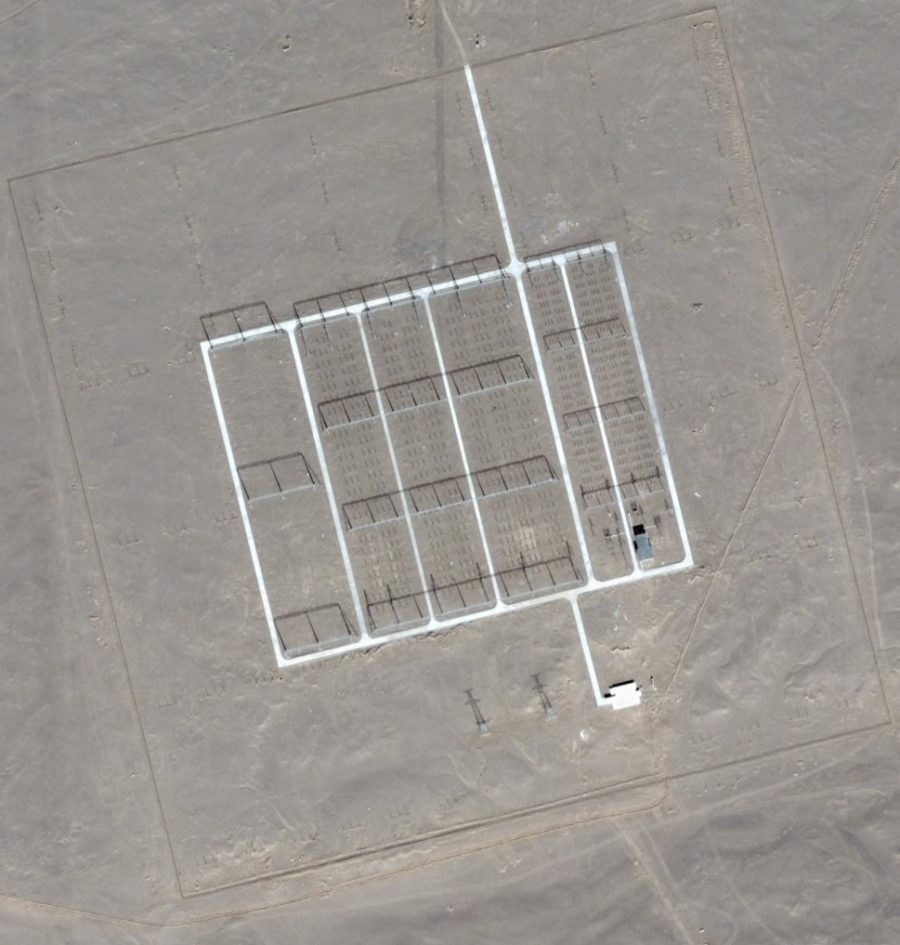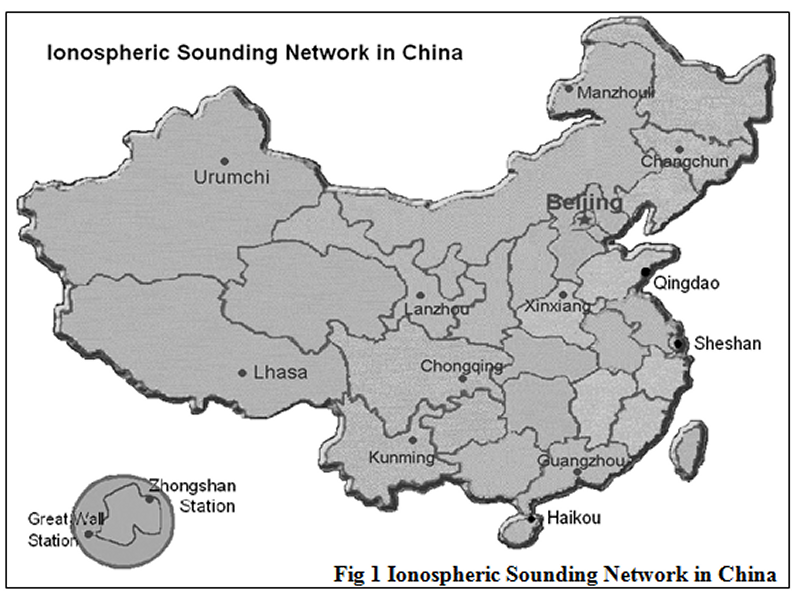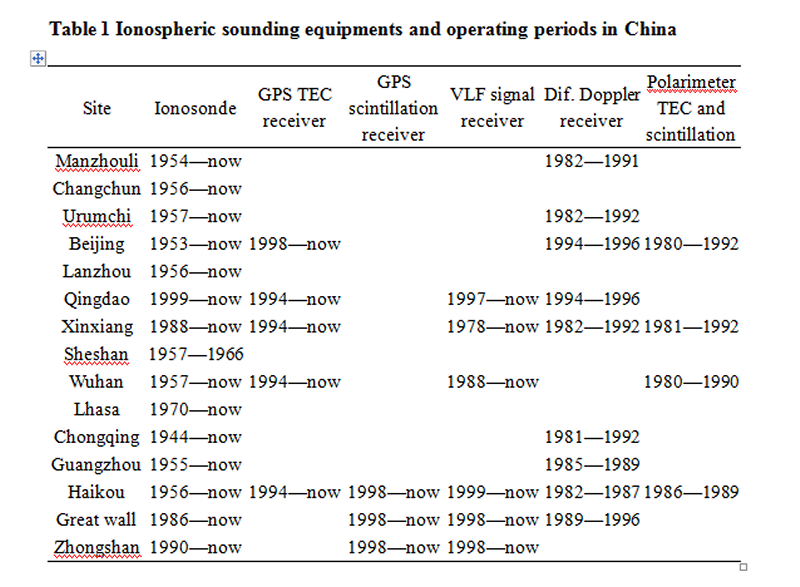|
Ionospheric Laboratory |
||||
|
Ionospheric Laboratory, Xinjiang (Sinkiang) Region 40°24'15.91"N, 93°38'09.74"E ..
Ionospheric sounding network and data in China Wu Jian Jiao Peinan Xiao Zuo
Wan Weixing Liu Ruiyuan Zhao Zhengyu
This paper appears in: Antennas, Propagation and EM
Theory, 2000. Proceedings. ISAPE 2000. 5th International Symposium on
Abstract
Ionospheric sounding has been conducted routinely
for more than 60 years in China. A complete network of ground-based sounding
sites covers the Chinese subcontinent, including vertical and oblique sounding,
GPS measurement of ionospheric TEC and scintillation, VLF receivers measuring
the lower ionosphere etc. In this paper, we give a picture of the sounding
network, equipment situation and data acquired with emphasis on vertical
ionosonde network
SOURCE: IEEE The Ionospheric Sounding in China The ionospheric sounding in China has a long history and has a well spread network, which is still keeping routine operation, providing a good background to do the ionospheric long-term prediction and short-term forecasting. The ionospheric sounding in China started in early 1940s (Wu et al., 2002). Fig.1 shows the ionospheric sounding network in China. The sounding equipments and operation periods are listed in Table 1. Among them 11 ionosonde stations are still in operation in China mainland. The data at integer UT hours are sent to forecasting center in Beijing twice a day through Internet. There is also a daily exchange of ionospheric data with Russian (for 4 stations) and with Australia (for 4 stations) respectively. A method of predicting the ionospheric F2 layer in the Asia and Oceania Region (AOR Method [Sun X.R., 1987]) was adopted as a regional ionospheric long-term prediction method in China and its surrounding area. Then this was cooperated with the International Reference Ionosphere and became the Reference Ionosphere in China (CRI) [Liu et al., 1994]. File http://www.irf.se/~christer/China_IONO.doc
Preliminary studies on ionospheric forecasting in China and its surrounding area R. Liua, Corresponding Author Contact Information
Polar Research Institute of China, 451 Jinqiao Road.,
Shanghai 200136,
Abstract The ionospheric sounding in China has a long history and has a well spread network, which is still keeping routine operation. The autocorrelation method is adopted for the short-term forecasting of ionospheric characteristics. The performances of the forecasts at Chongqing have been examined for different combination of parameters and algorithms by estimating the prediction errors. Preliminary results show that for predictions of more than 10 h ahead the “at once” method with f0F2 is preferable. For predictions of less than 10 h ahead the “iterations” method with View the MathML source is the best. A corrected method of the International Reference Ionosphere used in China region (the CRI model) is described in this paper. By introducing an effective ionospheric index Ice into the CRI model the regional forecasting could be realized. SOURCE: Science Direct Home Address:
Related:
Introduction Of the two Chinese scientific stations in Antarctic, the one in Zhong Shan is closely conjugated with the Svalbard area in the northern hemisphere. This makes it a valuable place for coordinated measurements both with the EISCAT Svalbard Radar (ESR) and the Polar satellite. In 1991 a cooperation agreement was signed between the Ionospheric Laboratory of the China Research Institute of Radiowave Propagation (CRIRP) in Xinxiang, China, and the Department of Physical Sciences, University of Oulu, Finland, to build an auroral photometer system for the Zhong Shan station (Kaila et al, 1997). The multichannel scanning photometer agreed upon was constructed in Oulu by April 1995, and delivered to China in May. Measurements were supposed to start in March 1997, to be continued during the local winter time until October (the same schedule of measurements is planned for every year). However, due to problems mentioned above, the current status of the system is unknown! |
||||
| FAIR USE NOTICE: This page contains copyrighted material the use of which has not been specifically authorized by the copyright owner. Pegasus Research Consortium distributes this material without profit to those who have expressed a prior interest in receiving the included information for research and educational purposes. We believe this constitutes a fair use of any such copyrighted material as provided for in 17 U.S.C § 107. If you wish to use copyrighted material from this site for purposes of your own that go beyond fair use, you must obtain permission from the copyright owner. | ||||
|
|




